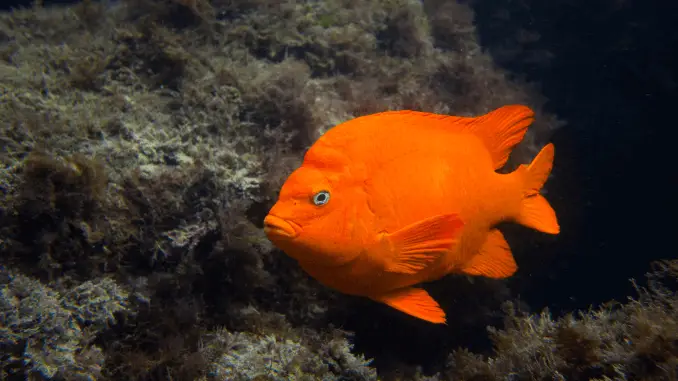
The Garibaldi is a beautiful bright orange plump fish.
They are very territorial and semi-aggressive fish that should not be kept with the same species.
Garibaldi’s would be suitable for you if you are an experienced fish keeper, they should not be kept by beginners as they require a large tank.
In this article, we’re going walk you through their behavior, their tank requirements, food and diet as well as their compatibility with other fish.
Before we start, here is a quick summary to help you decide whether the Garibaldi is a suitable fish for your aquarium.
TABLE OF CONTENTS
Garibaldi Fish Facts and Overview
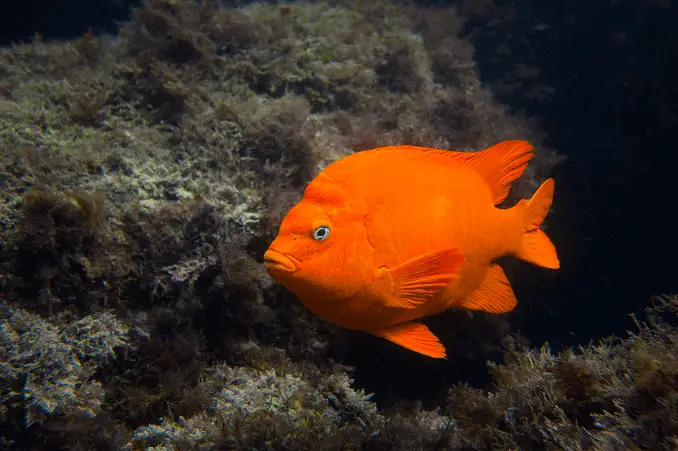
| Category | Rating |
| Care Level: | Moderate/Intermediate |
| Temperament: | Semi-aggressive |
| Color: | Orange |
| Lifespan: | 17-25 years |
| Size: | 12 inches |
| Diet: | Omnivore |
| Family: | Pomacanthidae |
| Minimum Tank Size: | 100 gallons |
| Tank Setup: | Live rock with plenty of hiding places |
| Compatibility: | Other large semi-aggressive fish such as tangs, large angels. Must not be kept with same species |
The Garibaldi is the official marine state fish of California. They are fully protected in California and it’s illegal to collect them or keep them there without a permit.
They are native to the Eastern Pacific Ocean and inhabit the subtropical waters of southern California and Baja California’s west coast.
Garibaldi’s are very rare North of California.
Their name derives from an Italian politician named Giuseppe Garibaldi who, in the 1840s, often wore a red shirt and died a national hero after he fought for the reunification of Italy.
Out in the wild, they are solitary fish who are very territorial; they are very aggressive to their own kind. Garibaldis live anywhere from 15-25 years, however in captivity their average life span is 12 years.
Appearance
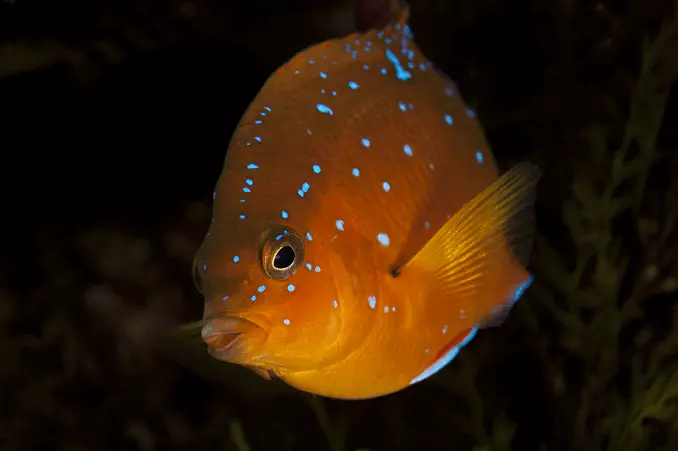 The Garibaldi has a very striking appearance. They are round, bulky fish and are radiant orange in color. They have yellow eyes and a small mouth with a single row of teeth.
The Garibaldi has a very striking appearance. They are round, bulky fish and are radiant orange in color. They have yellow eyes and a small mouth with a single row of teeth.
The Garibaldi is one of the largest breeds of Damselfish and can reach 15 inches and weigh up to 2 pounds. However, in an aquarium they generally only reach up to 12 inches.
Young Garibaldis are a red-orange with blue spots on their body, dorsal and caudal fins as well as faint blue margins. The older they get, the less spots they have.
Juveniles also have spots on their upper side and fins, but they tend to be larger and fewer in number.
Once fully grown, the males are larger and have a lobe on the front of their head.
They are a very hardy fish, however due to their size and the tank size requirements; we recommend that only intermediate and advanced fish keepers keep Garibaldis.
Diet
Garibaldis are omnivores. An omnivore is something that eats other animals and plants.
In the wild, they feed on bottom-dwelling invertebrates such as tubeworms, bryozoans, and nudibranchs. They’ll also eat crabs, shrimps, and small shellfish.
Garibaldis graze on small anemones, sponges and algae all of which grow in rocky places. One of the reasons their color is so bright is thought to be attributed to their sponge diet.
In captivity, Garibaldis will also accept a wide variety of foods. Their main diet should consist of similar food that they would eat in the wild.
They should be fed twice a day, a half and half diet of meaty food and herbivore food. By feeding them twice daily, this can also help with tank aggression (if that’s a problem in your tank).
Live foods such as brine shrimp and mysis shrimp can be offered occasionally, as can flake food and pellets.
You could also make your own fish food; it’s a lot cheaper and easier than you may think.
Habitat and Tank Requirements
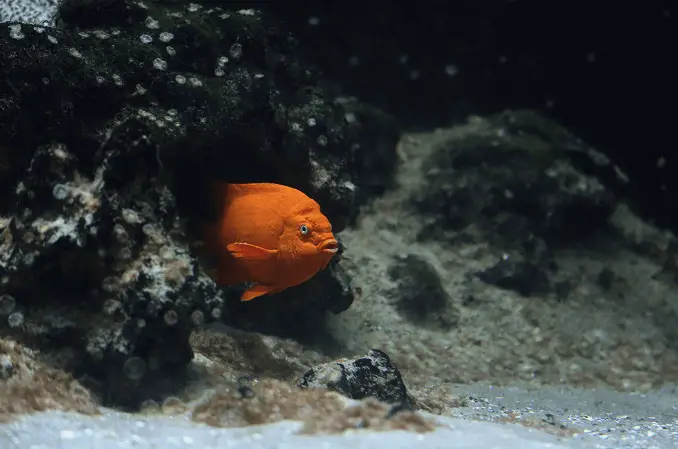 Garibaldi’s are usually found spread out amongst rocky reefs and kelp forests, close to the shoreline.
Garibaldi’s are usually found spread out amongst rocky reefs and kelp forests, close to the shoreline.
They usually inhabit waters under 14m, however they have been found as deep as 30m.
In their natural habitats, Garibaldi’s are solitary fish and are very territorial.
However, once the boundaries of their territory are set, they can live in peace as long as they don’t cross over.
In a space the size of a basketball court, forty Garibaldi’s can set up their territories and live happily.
How does this transfer into a tank setting?
You’ll need a large aquarium to keep a Garibaldi. If you’re only keeping one you’ll need a minimum tank size of 100 gallons.
If you intend to keep other fish along with your Garibaldi, you’ll need an even larger tank.
Garibaldi’s do well in both reef tanks and fish only tanks.
You tank should have plenty of rocks and corals to create hiding places, this is especially important for juveniles to help them feel safe and secure. You’ll need a good filtration set up to encourage a slow circulation of water around the tank.
Whilst most tropical Damselfish require water temperatures between 75 and 80 °F (24 to 27 °C), Garibaldi’s enjoy cooler temperatures between 68 and 79 oF (20 to 26oC), with a pH of 8.0 to 8.4.
If your tank is fish only, you should change the water at 10% every fortnight, or 20% a month. If they are kept in a 100+ gallon reef tank and the water is aged and stable, you’ll only need to change 20-30% of the water every 6 weeks.
Typical Behavior
Amongst divers they are known as the cheeky fish because they will always come over to find out what’s going on.
They have even been known to charge at divers, perhaps in an attempt to protect their territory, especially if they are protecting eggs.
When disturbed or approached, Garibaldi fish emit a thumping sound which can even be heard by divers.
Garibaldi’s are solitary fish and live in small territories. As they reach maturity they become extremely territorial and aggressive, especially males. Whilst the females also establish their own territory, they do not do protect the area as fiercely as the males.
In the wild, they have clearly defined territories so you may see two Garibaldi’s swimming calmly only two feet apart, as long as each one stays in their territory.
You may also see Garibaldi’s gathering in shallower waters above the reeds, the territorial nature only seems to occur in the rocky reef.
Juveniles are relatively easy to keep in an aquarium, however as they grow in size and become more territorial, they become more of a challenge.
Garibaldis are active swimmers and very hard fish, and although they don’t require any special care, we only recommend that intermediate fish keepers keep this particular fish due to its aggression and the tank size required.
Compatibility with Other Fish
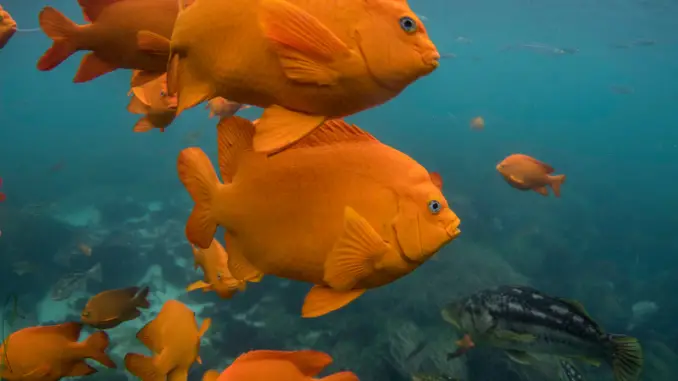 Only one Garibaldi species should be kept in a tank. They are extremely aggressive towards their own species.
Only one Garibaldi species should be kept in a tank. They are extremely aggressive towards their own species.
This won’t present much of a problem as the fish is growing but as soon as it reaches maturity it will be completely intolerant of its own kind.
If you want to keep other fish with your Garibaldi, you can pair them with other large semi-aggressive species such as Pomacanthus or Holacanthus angelfishes, parrotfish, sharks and rays.
Other species you can keep them with include:
- Tangs
- Large Angels
- Large Wrassess
- Lionfish
- Groupers
- Soapfish
We do not recommend that you keep any small or non-aggressive fish in the tank withGaribaldi.
For more information on other things you should not keep in your fish tank you can read here.
Reproduction
Before we look at how Garibaldi fish reproduce, it’s important to note that they have never successfully been bred in captivity, and it’s not advisable that it’s tried.
They reach sexual maturity at age 5-6, and are about 8-9 inches long. Upon reaching adulthood he will select a promising stretch of reef which will become his life-long home.
Unlike many other species, the male Garibaldi is the nest builder, protector of the eggs, and the main care giver.
The reproduction process starts in early spring when the male will begin to establish a spawning area within their territory.
He’ll prepare the space by grooming, cleaning and taking any unwanted small animals, and plant growth. Next he will use red algae, which he will tend to by trimming them to around 1 inch long, a perfect nest for thousands of eggs to rest.
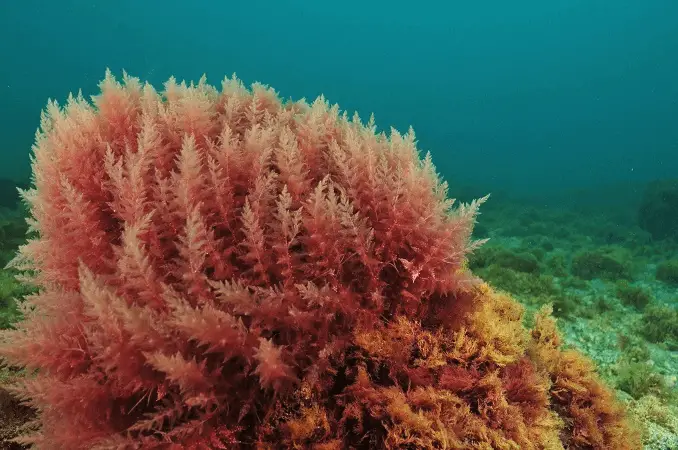 Anything that will cause damage or be detrimental to the growth of the red algae will be cleared away. This process can take up to a month.
Anything that will cause damage or be detrimental to the growth of the red algae will be cleared away. This process can take up to a month.
Once the males area is ready, usually from March through July, he will approach female Garibaldi’s and try and entice them into his nesting site.
To do this, he will swim over to the female with his fin straight up, he’ll swim loops around her whilst making a loud clucking noise, and then dart back to the nest in hope that she will follow. However, the females are highly selective. She’ll often visit up to 15 nests before making her mind up about where to deposit her eggs.
The female will inspect each nest and look at the eggs that have already been deposited (they are reluctant to lay their eggs in an empty nest). The color indicates how fresh they are. If she approves of the nest, the male, and the eggs, she’ll lay between 15,000 to 80,000 bright yellow eggs which will then be fertilized by the male.
As soon as the female has laid her eggs, the male will chase her from the nesting area to prevent her from eating the eggs and to entice more females to come and lay their eggs.
Females usually choose a number of different nests, and more than one female will often deposit her eggs in one nest.
Throughout the two to three-week incubation period, the male will be extremely aggressive and defensive of his nesting area. He will groom and fan the eggs to care for them, and will also eat a batch from time to time to encourage more females to lay their eggs there.
Females are more likely to lay their eggs next to other freshly laid eggs, it’s unlikely they will lay eggs next to the more dark-gray color of eggs which are about to hatch.
When the eggs are ready to hatch is dependent on the water temperature, but they usually hatch in the first two hours after sunset. The larvae then scatter among the plankton.
Is the Garibaldi Fish Right for Your Aquarium
The first question you need to ask yourself is, are you an experienced fish keeper? This is certainly not a beginner’s fish and you must have some experience if you plan on caring for Garibaldi’s.
You’ll need a large tank, and therefore you’ll need plenty of space to keep it. Does your home allow for that?
Garibaldi’s are semi-aggressive fish and should not be kept with peaceful fish. If you already have an existing tank, do the fish that you already have allow for you to add a Garibaldi?
One last thing to think about is, where will you buy it from? Is it a reputable source?
Fishing for Garibaldi’s is illegal without a permit, and so therefore only a few select places will be able to stock them legally. You should ensure you choose a place which has a license to promote the protection of this species when you select your fish.
Is the Garibaldi suitable for your fish tank? We’d love to hear your experiences with Garibaldis in the comments section below.

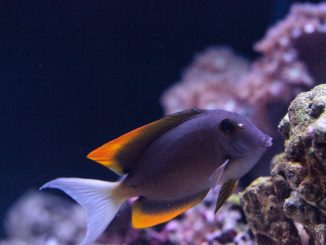
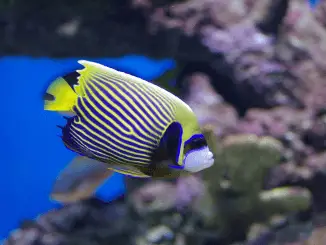
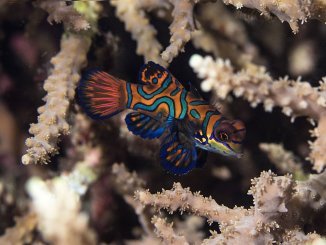
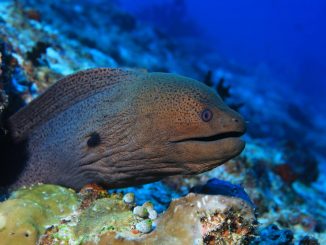
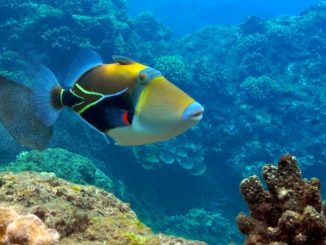

You realize that one of your garabaldi pics is a pic of a freshwater bloodparrot cichlid, right?
Hi Arthur,
Thank you for pointing out that mistake! I’ve updated the article to be more accurate.
– Robert